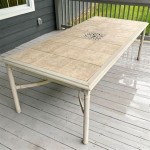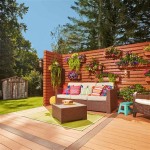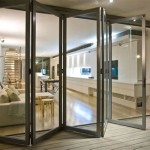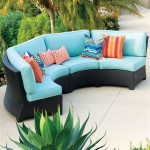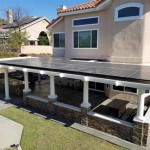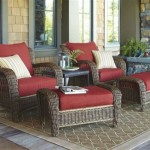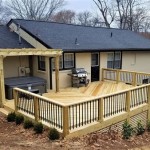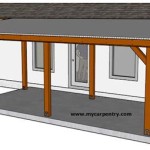How To Make The Most Of Your Patio Swing Canopy Frame
A patio swing offers a relaxing outdoor seating option, and the canopy frame plays a crucial role in enhancing its functionality and longevity. A well-maintained and strategically utilized canopy frame provides protection from the elements, improves aesthetics, and extends the lifespan of the swing itself. Understanding how to maximize the potential of the canopy frame is essential for any patio swing owner.
The canopy frame is more than just a support structure for the fabric overhead. It's a critical component in the overall stability and weather resistance of the swing. Factors such as material quality, design, and maintenance all contribute to the frame's performance and longevity. Neglecting the frame can lead to premature wear and tear, compromising the swing's structural integrity and diminishing its aesthetic appeal.
Several key aspects contribute to optimizing the use of a patio swing canopy frame. These include proper assembly and installation, selecting appropriate canopy fabric, implementing regular maintenance practices, and considering additional enhancements for increased functionality and comfort. Each of these areas will be explored in detail to provide a comprehensive guide to maximizing the potential of your patio swing canopy frame.
Proper Assembly and Installation
The foundation for a well-functioning patio swing canopy frame lies in its proper assembly and installation. Failing to follow the manufacturer's instructions can result in a weakened structure, instability, and potential safety hazards. Before beginning the assembly process, it is essential to carefully review the included instructions and identify all the necessary components.
Inventorying the parts list ensures that all required hardware, such as bolts, screws, and connecting pieces, are present. Discrepancies should be addressed immediately by contacting the manufacturer or retailer. Attempting to substitute missing parts with generic hardware can compromise the frame's structural integrity and void any warranties.
During assembly, pay close attention to the orientation of each piece. Incorrectly aligning components can lead to stress points and weaken the overall frame. Use the appropriate tools, such as wrenches and screwdrivers, and avoid over-tightening bolts or screws, which can strip threads and damage the frame. Ensure that all connections are secure and stable before proceeding to the next step.
Once the frame is assembled, selecting an appropriate location for the swing is crucial. The ground should be level and stable to prevent rocking or tilting. Uneven surfaces can put undue stress on the frame, leading to warping or breakage. Consider the surrounding environment and ensure there is sufficient clearance for the swing to move freely without obstruction.
If the patio swing is placed on a concrete surface, consider using rubber pads or mats under the legs to prevent scratching and provide additional stability. For softer surfaces like grass or dirt, anchor the legs into the ground using stakes or ground anchors to prevent movement and ensure stability, especially in windy conditions. Properly securing the frame reduces the risk of tipping or damage during use.
After installation, regularly inspect the frame for any signs of looseness or misalignment. Tighten any loose bolts or screws and make any necessary adjustments to ensure the frame remains stable and secure. This proactive approach helps prevent minor issues from escalating into more significant problems down the road.
Selecting Appropriate Canopy Fabric
The choice of canopy fabric has a significant impact on the functionality and longevity of the patio swing. The fabric provides shade, protection from the elements, and contributes to the overall aesthetic appeal of the swing. Selecting a fabric that is durable, weather-resistant, and visually appealing is essential for maximizing the benefits of the canopy frame.
Consider the climate and weather conditions in your area when choosing a canopy fabric. Materials like polyester are generally water-resistant and provide good UV protection. However, they may not be suitable for areas with heavy rainfall or extreme sun exposure. Acrylic fabrics, such as solution-dyed acrylic, offer superior fade resistance and water repellency, making them a better choice for harsher climates.
The weight and thickness of the fabric are also important considerations. Heavier fabrics tend to be more durable and provide better protection from the elements, but they may also be more expensive and require a sturdier frame. Lighter fabrics are more affordable and easier to install, but they may not be as durable or weather-resistant.
In addition to weather resistance, consider the fabric's breathability. Fabrics that allow air to circulate can help prevent the buildup of heat and moisture, making the swing more comfortable to use in hot weather. Mesh fabrics are a good option for maximizing airflow, but they may not provide as much shade or protection from rain.
The color of the canopy fabric can also affect its performance. Darker colors absorb more heat than lighter colors, making the swing potentially uncomfortable in hot weather. Lighter colors reflect sunlight and keep the swing cooler, but they may also be more prone to fading and staining.
When selecting a canopy fabric, consider its ease of cleaning and maintenance. Fabrics that are stain-resistant and easy to wipe down will require less effort to keep clean and looking their best. Removable and machine-washable canopies are particularly convenient for those who want to keep their swing looking fresh and well-maintained.
Regularly inspect the canopy fabric for any signs of wear and tear, such as rips, tears, or fading. Promptly repair any damage to prevent it from worsening and compromising the fabric's integrity. When the canopy is not in use, store it in a dry and protected location to prolong its lifespan and prevent damage from the elements.
Implementing Regular Maintenance Practices
Regular maintenance is crucial for extending the lifespan and optimizing the performance of the patio swing canopy frame. Neglecting maintenance can lead to rust, corrosion, and other forms of damage that can compromise the frame's structural integrity and aesthetic appeal. Implementing a consistent maintenance routine can help prevent these problems and ensure the swing remains in good condition for years to come.
Regularly clean the canopy frame with a mild soap and water solution to remove dirt, dust, and debris. Use a soft cloth or brush to avoid scratching the frame's surface. Rinse thoroughly with clean water and allow the frame to dry completely before replacing the canopy. Avoid using harsh chemicals or abrasive cleaners, as these can damage the frame's finish.
Inspect the frame for any signs of rust or corrosion. If rust is present, remove it with a wire brush or sandpaper and apply a rust-inhibiting primer. Then, paint the frame with a weather-resistant paint to protect it from further corrosion. Choose a paint color that complements the canopy fabric and the overall aesthetic of your outdoor space.
Lubricate moving parts, such as hinges and joints, with a silicone-based lubricant to prevent squeaking and ensure smooth operation. Avoid using oil-based lubricants, as these can attract dirt and debris, which can eventually cause the parts to seize up. Apply the lubricant sparingly and wipe away any excess to prevent staining.
Check all bolts, screws, and connecting pieces regularly to ensure they are tight and secure. Tighten any loose hardware to prevent instability and ensure the frame remains structurally sound. Replace any damaged or missing hardware with appropriate replacements from the manufacturer or a reputable hardware store.
During periods of inclement weather, such as heavy rain, strong winds, or snow, consider removing the canopy from the frame to prevent damage. Store the canopy in a dry and protected location until the weather improves. If possible, cover the frame with a waterproof cover to protect it from the elements.
Before storing the patio swing for the winter, thoroughly clean the frame and canopy and allow them to dry completely. Disassemble the frame if possible and store it in a dry and protected location, such as a garage or shed. This will help prevent damage from moisture and extreme temperatures and prolong the lifespan of the swing.
Enhancements for Increased Functionality and Comfort
Beyond the basic functionality of providing shade and protection from the elements, several enhancements can be added to the patio swing canopy frame to increase its functionality and comfort. These enhancements can range from simple additions like curtains and lighting to more complex modifications like adding side tables or mosquito netting.
Adding curtains to the canopy frame can enhance privacy and provide additional protection from the sun and wind. Choose curtains made from weather-resistant fabric that complements the canopy fabric and the overall aesthetic of your outdoor space. Curtains can be easily attached to the frame using hooks, rings, or ties.
Integrating lighting into the canopy frame can create a warm and inviting atmosphere for evening relaxation. String lights, lanterns, or LED strip lights can be used to illuminate the swing and surrounding area. Consider using solar-powered lights to reduce energy consumption and eliminate the need for wiring.
Adding side tables or shelves to the canopy frame can provide a convenient place to set drinks, snacks, or books. These can be attached to the frame using brackets or clamps. Choose side tables or shelves made from weather-resistant materials, such as wood, metal, or plastic.
Installing mosquito netting around the canopy frame can protect you from insects and allow you to enjoy your swing in comfort, even during mosquito season. The netting can be easily attached to the frame using hooks, clips, or zippers. Choose netting made from a fine mesh material that effectively blocks insects while allowing for good airflow.
Consider adding cushions and pillows to the swing to enhance comfort and relaxation. Choose cushions and pillows made from weather-resistant fabric that is comfortable to sit on and easy to clean. Coordinate the colors and patterns with the canopy fabric and curtains to create a cohesive and stylish look.
Adding a canopy cover can provide extra protection from the elements and prolong the lifespan of the canopy fabric. Choose a cover made from waterproof and UV-resistant material that fits snugly over the canopy. The cover can be easily removed and stored when not in use.
These enhancements can transform a simple patio swing into a comfortable and functional outdoor retreat. By carefully considering your needs and preferences, you can customize your swing to create a space that is perfect for relaxation, entertainment, and enjoying the outdoors.
How To Make A Swing Canopy Sailrite

Outdoor Swing Makeover Tatertots And Jello

Patio Swing Makeoverdiy Show Off Diy Decorating And Home Improvement Blog

Best Patio Swing With Canopy Costway Blog

How To Make A Replacement Swing Canopy Do It Yourself Advice Blog

The Best Porch Swings With Canopies For Cozy Outdoor Lounging Chicago Tribune

Best Patio Swing With Canopy Costway Blog

How To Build A Porch Swing Frame Diy

How To Make A Swing Chair Canopy The Carpenter S Daughter

Best Patio Swing With Canopy Costway Blog
Related Posts

